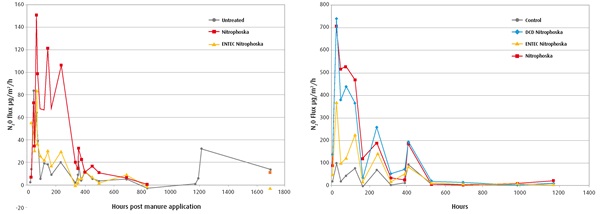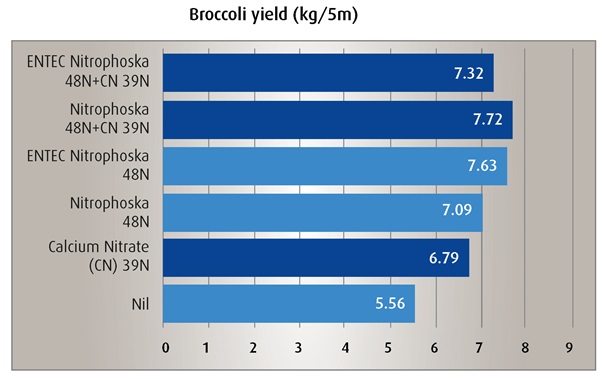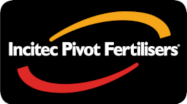ENTEC could be a win : win in vegetable systems
Vegetable growers know too well that crop nutrition is a key driver for achieving high yields and maximising returns from every land unit they farm.
Download this article
They simply can’t risk the failure of underdoing nutrition, given their crop’s elevated nutrient demands, the short turnaround times between crops and the high value of their produce.
While yield responses taper off to relatively small gains at the upper end of fertiliser rates, the cost of slightly oversupplying fertiliser might just be considered a cheap form of insurance compared to the risk of undersupplying fertiliser and risking yield penalties and lower returns.
Understandably, fertiliser programs are often based on sticking to a set recipe based on previous success with select products and rates for specific vegetable crop types.
While this is reasonable considering the complexity of intensive vegetable production, the question remains: can we do better and why might we need to?
From a producer’s perspective, doing it better equals improvements in productivity and profitability. From a consumer’s perspective, there is a growing expectation for clean, green, environmentally sustainable food production.
Ideally, improvements in nutrition programs would address both goals – a win : win situation.
This is particularly true for nitrogen management, which requires a greater level of monitoring and constant re-evaluation due to its high mobility in the soil and the variable ways it can be lost.
Nitrate nitrogen is prone to leaching losses, especially in sandier soil types, and to surface runoff when irrigation is used (or over used), or when irrigation coincides with heavy rainfall.
In waterlogged soils, nitrate nitrogen is converted to nitrous oxides and dinitrogen gas, a process referred to as denitrification. The end result is gaseous loss of nitrogen to the atmosphere.
Clearly, there is a close link between water and nitrogen management for optimising efficiencies, or alternatively, for negating losses which are a cost to both production and the environment.
While best nitrogen management practices depend on local soil, crop and environmental conditions, constant measurement and monitoring are the keys to better management as opposed to ‘set and forget’ programs.
Automated weather, soil moisture and temperature, and even soil nitrate monitoring technologies calibrated with soil and tissue analysis now allow growers and their advisers to refine nitrogen rate and timing decisions more easily and more accurately.
Even so, weather predictions are never precise and research has demonstrated that using nitrogen stabilisers, such as ENTEC®, can provide growers with additional help in guarding against potential nitrogen losses and improving nitrogen use efficiency.
Applied to ammonium and urea based fertilisers, ENTEC works by delaying the activity of the bacteria which oxidise ammonium to the nitrate form of nitrogen for a period of time.
While the nitrogen is stabilised in the ammonium form, it is safe from denitrification and leaching losses and the crop can still use the applied nitrogen.
A two-year study co-funded by DAFF and the Victorian DPI conducted between 2011-2013 demonstrated consistent reductions in nitrous oxide emissions by around 60% when ENTEC was applied to NPK and urea based fertilisers (Figure 1).
- Broccoli 2011 b) Lettuce 2012

Figure 1: Nitrous oxide emissions with and without nitrogen stabilisers applied in trials at Werribee in a) broccoli in 2011; and b) lettuce in 2012. Source: ‘Carbon and Sustainability, a demonstration on vegetable properties across Australia’, P. Melville, HAL, 2013.
The potential benefits of nitrogen stabilisers on yields and nitrogen use efficiencies can be masked in standard fertiliser programs which always aim to ensure nitrogen is more than adequate.
Broccoli trials at Werribee (2011) and Boneo (2012) recorded yield increases of between 8% and 59% respectively from adding ENTEC to the base fertiliser (Nitrophoska®) where supplementary side dressings of nitrogen were not applied at transplanting (Figure 2).

Figure 2: Effect of ENTEC treatment on base fertiliser (Nitrophoska) applied at 400 kg/ha (48N) on yield of broccoli at Werribee 2011 and Boneo 2012.
Similar yield increases were not recorded in the eight week lettuce crop at Werribee in 2012, but observations suggested too much nitrogen was supplied. The base fertiliser program (87 kg/ha of nitrogen) had an additional 43 kg/ha of nitrogen applied through one side dress and two fertigations.
While no comparison could be made where only the base fertiliser program was applied in the lettuce trial at Werribee, this was possible from the broccoli trial grown the year earlier (Figure 3).
Yields did not increase where the Nitrophoska with ENTEC treatment was side dressed with an additional 39 kg/ha of calcium nitrate, indicating that enough nitrogen was available with the stabilised fertiliser and offsetting the need for one side dress early in the crop.

Figure 3: Effect of ENTEC treatment on base fertiliser (Nitrophoska) applied at 400 kg/ha (48N) and side dress with calcium nitrate at 300 kg/ha (39N) on yield of broccoli at Werribee 2011.
These results highlight great potential for ENTEC in improving nitrogen use efficiencies, reducing greenhouse gas emissions, achieving equivalent if not improved yields and a better bottom line in the process.
However, realising any combination of these outcomes relies on an adequate level of soil and crop monitoring to better match nutrient supply with different vegetable crop needs.
Nitrogen stabilisers provide growers with an additional tool for effective delivery of nitrogen when and where it is needed.
For more information on ENTEC and its use in vegetable crops, contact Craig Farlow on 0407 342 103 or craig.farlow@incitecpivot.com.au
Craig Farlow
Technical Agronomist
Incitec Pivot Fertilisers


